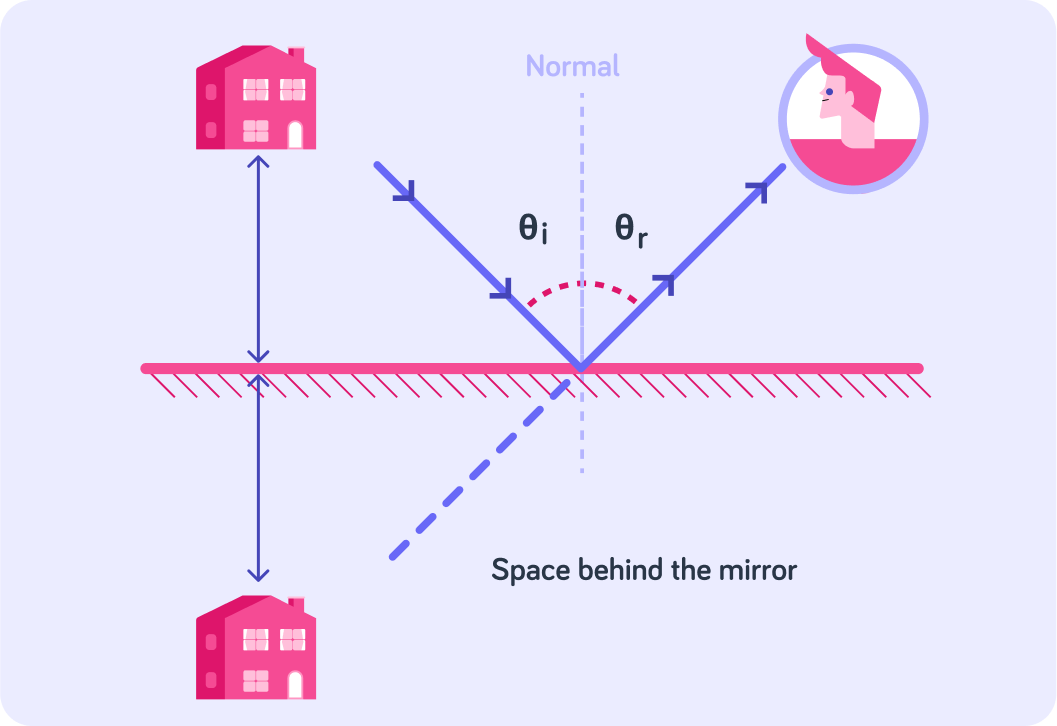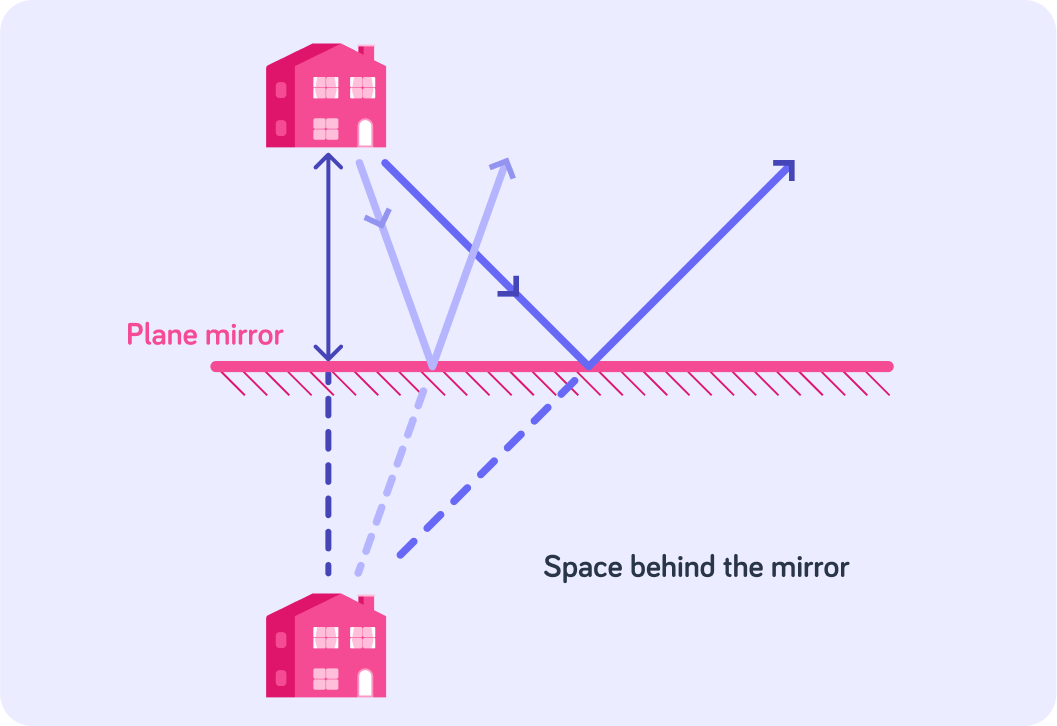YOU ARE LEARNING:
Mirror Images and Virtual Images

Mirror Images and Virtual Images
When light reflects off a mirror, it creates a virtual image. The location of this can be found by drawing a ray diagram.
In this lesson, we will look at why we see reflections in mirrors and talk about what these reflections actually are!
Lets first recap...
When light hits a mirror, its behaviour is an example of...
A. transmission. B. reflection.
C. absorption.
Answer A, B or C.

The angle of incidence, θi, is measured between the incident ray and the...

True or false? The law of reflection states that θi>θr

True or false? The law of reflection states that θi=θr

Let's recall the steps in constructing a ray diagram for reflection in a plane mirror...
First we draw the plane mirror. What would be draw for step 2?
A. The incident ray. B. The normal. C. The reflected ray.

Out of the following options, which would be step 3?
A. Draw the reflected ray so that θi=θr. B. Draw the normal, perpendicular to where the incident ray hits the mirror.

That leaves the final step, which is drawing the reflected ray so that θi=θr.
To summarise: Draw the plane mirror.
Draw the incident ray.
Draw the normal.
Draw the reflected ray.
When looking into a mirror, what is your position in relation to it?

Look at this diagram carefully.
It consists of a ray diagram for a plane mirror, where the incident ray is coming from an object.

The "image" in the diagram is called a virtual image. This is because the reflected rays forming the image look like they originate behind the mirror.
We say behind because in the ray diagram, the image is formed in the space behind the mirror, rather than in front of the mirror where the object is.

Does the reflected ray actually originate behind the mirror? Answer yes or no.


You can find the location of the virtual image by placing a ruler along the reflected ray and extending it back behind the mirror.
We use a dotted line to show that it isn't a real ray.

If the distance between the object and the mirror is 5m , what do you think the distance between the virtual image and the mirror will be?


Which best describes a reflection?

Why does an image in a mirror look like its coming from behind the mirror?

To find the exact location of the image, we can draw 2 rays coming from the same point on the object.
We can see that the reflected rays cross at a point behind the mirror. That is where the image is formed.

Look at the first dark purple incident ray. What is its angle of incidence?


If you look at yourself in the mirror, straight on, what would be the angle of incidence of the ray coming from your face and reflecting back into your eye?

Let's sum up with the steps required when drawing a ray diagram for an object being reflected in a mirror:
Where must the incident ray originate?

The next step is drawing the normal; this must be at what angle to the surface of the mirror?

Next we draw the reflected ray. What is the name of the law that tells us what the angle of reflection should be?

Lastly, to find the location of the image we should...
A) extend the reflected ray behind the mirror and draw the image the same distance away from the mirror as the object is. B) draw the image at the same height and distance away from the mirror as the object, but on the other side of the mirror. C) extend the lines of multiple reflected rays back and draw the image where they meet. D) any of the above.

